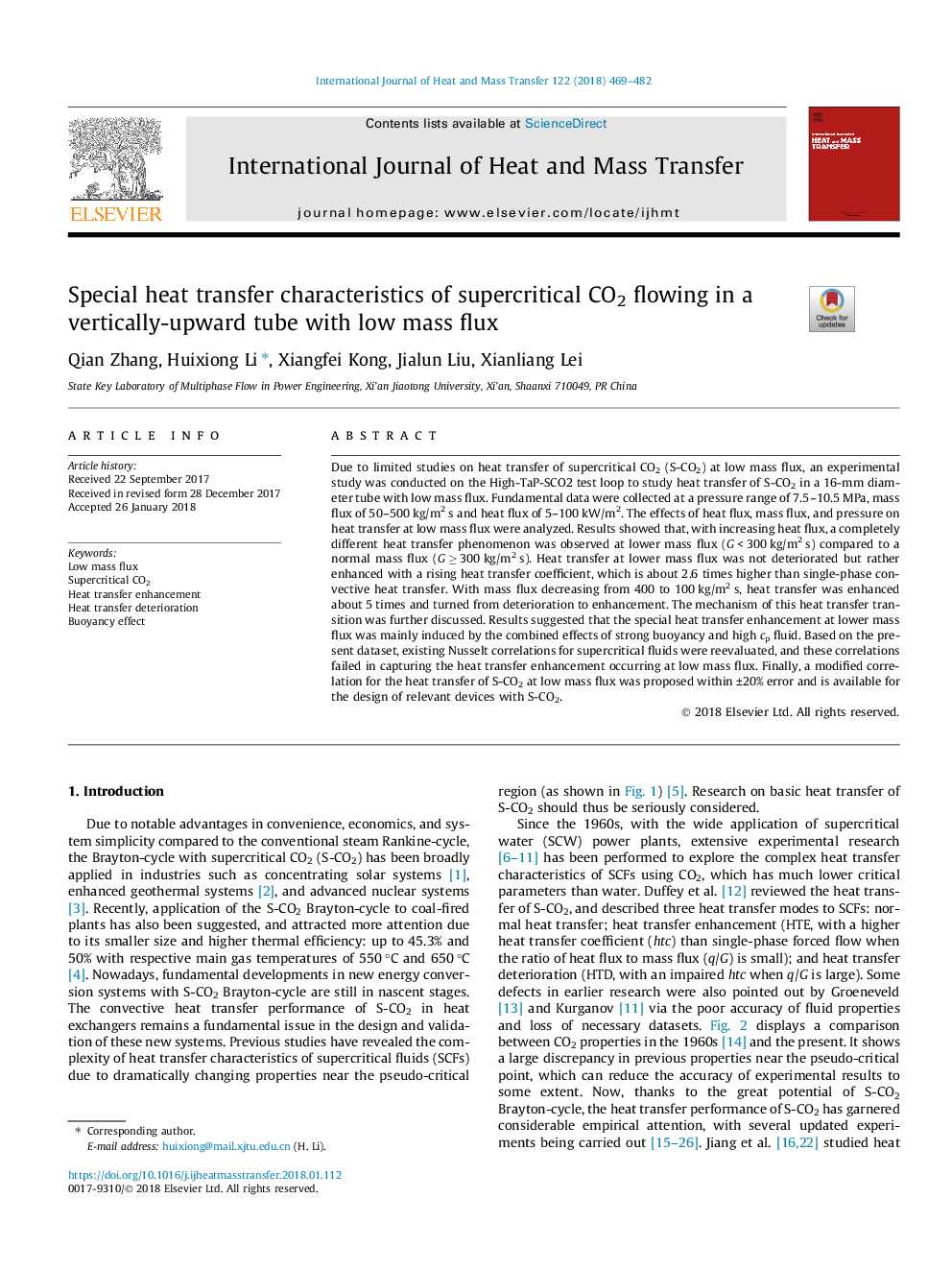| Article ID | Journal | Published Year | Pages | File Type |
|---|---|---|---|---|
| 7054386 | International Journal of Heat and Mass Transfer | 2018 | 14 Pages |
Abstract
Due to limited studies on heat transfer of supercritical CO2 (S-CO2) at low mass flux, an experimental study was conducted on the High-TaP-SCO2 test loop to study heat transfer of S-CO2 in a 16-mm diameter tube with low mass flux. Fundamental data were collected at a pressure range of 7.5-10.5â¯MPa, mass flux of 50-500â¯kg/m2â¯s and heat flux of 5-100â¯kW/m2. The effects of heat flux, mass flux, and pressure on heat transfer at low mass flux were analyzed. Results showed that, with increasing heat flux, a completely different heat transfer phenomenon was observed at lower mass flux (Gâ¯<â¯300â¯kg/m2â¯s) compared to a normal mass flux (Gâ¯â¥â¯300â¯kg/m2â¯s). Heat transfer at lower mass flux was not deteriorated but rather enhanced with a rising heat transfer coefficient, which is about 2.6 times higher than single-phase convective heat transfer. With mass flux decreasing from 400 to 100â¯kg/m2â¯s, heat transfer was enhanced about 5â¯times and turned from deterioration to enhancement. The mechanism of this heat transfer transition was further discussed. Results suggested that the special heat transfer enhancement at lower mass flux was mainly induced by the combined effects of strong buoyancy and high cp fluid. Based on the present dataset, existing Nusselt correlations for supercritical fluids were reevaluated, and these correlations failed in capturing the heat transfer enhancement occurring at low mass flux. Finally, a modified correlation for the heat transfer of S-CO2 at low mass flux was proposed within ±20% error and is available for the design of relevant devices with S-CO2.
Keywords
Related Topics
Physical Sciences and Engineering
Chemical Engineering
Fluid Flow and Transfer Processes
Authors
Qian Zhang, Huixiong Li, Xiangfei Kong, Jialun Liu, Xianliang Lei,
